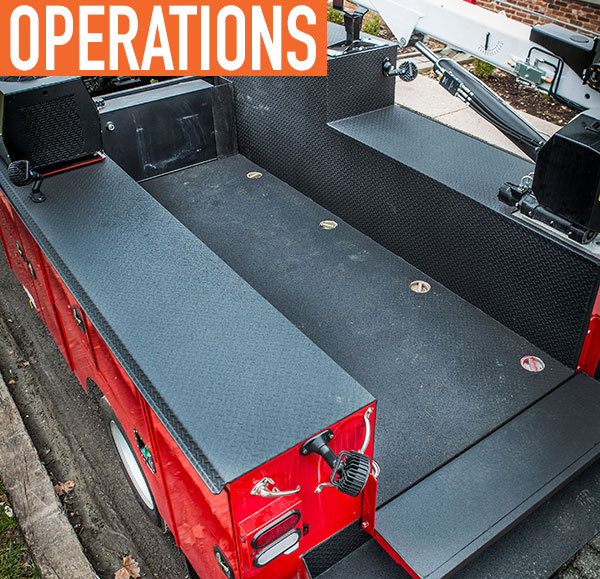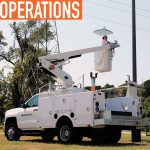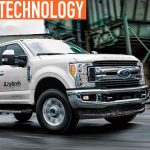Work truck owners, fleet managers, rental equipment company owners, and others spend large amounts of resources and time keeping their equipment both looking great and functioning at the highest levels. But many are noticing that traditional paint and powder coating just doesn’t hold up to the demanding conditions of most work environments. Paint looks great when new, but the tough conditions expose its limitations, requiring fleet managers to allocate resources to maintain appearance and protection from rust, corrosion, and other hazards.
This paradigm is shifting. The recent 2017 SEMA Show in Las Vegas, the largest automotive aftermarket trade show in the world, brought together all major manufacturers of spray-on protective coatings and a common theme was the product’s use in increasingly diverse fleet and industrial applications. Flashy lifted pickup trucks shared the spotlight with hard-working fleet trucks, and equipment sprayed with polyurea coatings showed attendees the growth of the protective coating market and how truck fleets can protect their equipment without paint and powdercoat.
STRENGTH TO LAST
Those who use work trucks in their daily lives need solutions that work. Something that looks great, must perform great or it won’t last. This is especially important for work trucks, which is why polyurea protective coatings continue to grow in popularity.
Today’s leading coatings provide exceptional protection against impacts, abrasions, corrosion, the elements, harsh chemicals, and even the sun with optional UV stabilizers. These coatings then help the equipment look great longer, but also help keep the equipment in service longer with less time and resources needed for repairs. Trucks in the shop are not making money for companies, and fleet entities know that.

Nearly every service body Summit Truck Bodies sells comes standard with a protective LINE-X coating on various surfaces.
A specific example is in industries dealing with harsh chemicals that can damage paint. Many have started turning to polyurea coatings because of their ability to hold up against petroleum, solvents, and other chemicals. Industries ranging from petroleum delivery to pesticides are now using polyurea coatings for their durability and resistance to these chemicals. And, because of the incredible mechanical bond that polyurea coatings have with properly prepared substrates, cleaning is made easy with simple detergents and water with no damage to the substrate or protective coating.
SAFETY FOCUS
Safety is one of the most important factors in all industries, which is yet another reason polyurea coatings have become popular in various work-truck environments. Sprayed using special techniques to create a textured surface, polyurea coatings can be applied to exceed ASTM C1028 and NFPA 1901 slip-resistance standards, providing grip in both wet and dry weather to help prevent unneeded slips and falls, which cause thousands of injuries annually and cost companies millions of dollars in insurance and additional labor expenses. Polyurea coatings help to keep workers safe, which is the highest priority for all companies and industries.
IN THE REAL WORLD
When they first hit the market more than 20 years ago, polyurea and polyurethane coatings were primarily sprayed in truck beds to protect against the abuse most beds are subjected to throughout their lifetime. Over time however, many industries began embracing the properties of these coatings, which include the work truck and field service professions. Today, many companies and organizations operate with smaller budgets and a need to stretch equipment far beyond its expected service life. Work truck owners and the companies that manufacture the equipment are constantly looking for better ways to extend the service life of their equipment. Protective coatings deliver.
Summit Truck Bodies, based in Wathena, Kansas, has been manufacturing service bodies for years and now use LINE-X’s industry-leading protective coatings on several surfaces across their product lineup. Nearly every service body they sell comes standard with a protective coating to not only protect it from scratches, abrasions, impacts, the elements and other field working conditions, but it also works as an anti-skid surface for workers who need to stand on the protected surfaces.
In addition to Summit, Curry Supply, based in Martinsburg, Pennsylvania, incorporates the use of polyurea coatings to enhance their products for end users. Curry Supply manufacturers commercial service equipment and also incorporates polyurea coatings on specific body parts such as frames, mounts, and other areas to help with protection against abrasion, chemicals, and corrosion.
Polyurea coatings have also been used on a wide variety of exceedingly-demanding work truck environments to include airfield equipment, emergency services vehicles like SWAT and firetrucks, loading docks, mixing shafts, lift gates, and even tractor canopies, among others.
COATING THICKNESS
Most coatings are applied thick to provide maximum impact and abrasion protection, but certain companies have created thin build polyurea coatings that are designed for exterior surfaces that need protection from light abrasions and scratches—but can replace powder coat with enhanced durability. For example, LINE-X ULTRA is a product that can be applied thin on body panels, toolbox doors, and other surfaces that have close tolerances but still need excellent abrasion and UV protection. In addition, smoother surfaces and an overall attractive look make a thin build option a solid alternative. This coating just gives fleet managers and work truck owners more diverse options to outfit their equipment with the best spray-on protection available.

Curry Supply uses polyurea coatings to protect frames and other areas; the coating flows over metal cutouts with ease.
When those in the work-truck industry are thinking of incorporating polyurea coatings into their fleets, choosing a reputable company that understands the products and customized application demands is of the utmost importance. Polyurea needs to be sprayed at a specific thickness to provide the maximum amount of protection—so protective coating companies should have in place quality-control measures that verify both the coating’s thickness using visual inspections and testing using a coating thickness gauge like an Elcometer.
These diverse applications reflect the growth of the industry and how corporations and various verticals are using polyurea coatings in new ways to extend the limits of the equipment—keeping machines looking and performing at their best and well beyond intended service life.
FOR MORE INFORMATION
Find out more about LINE-X, visit www.linex.com.
_______________________________________________________________________
MODERN WORKTRUCK SOLUTIONS: DECEMBER 2017 ISSUE
Did you enjoy this article?
Subscribe to the FREE Digital Edition of Modern WorkTruck Solutions magazine.
![]()





